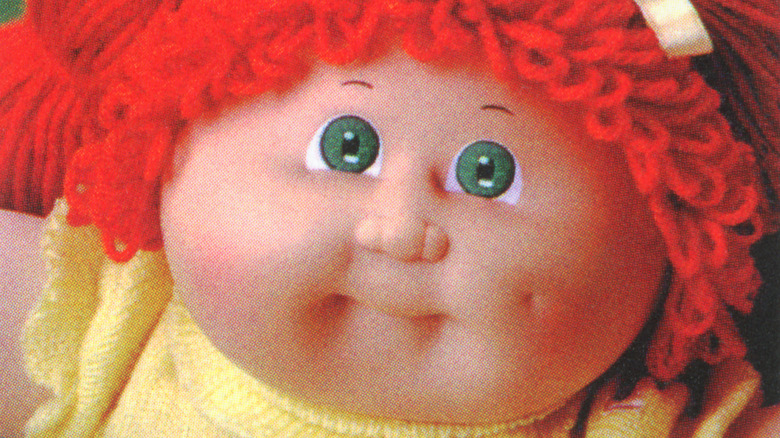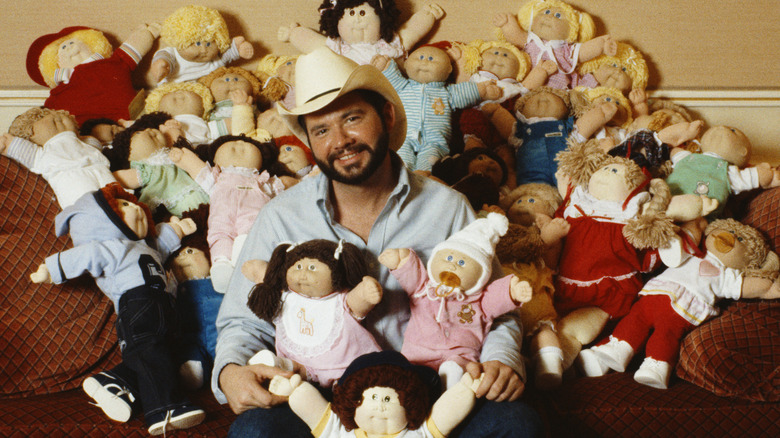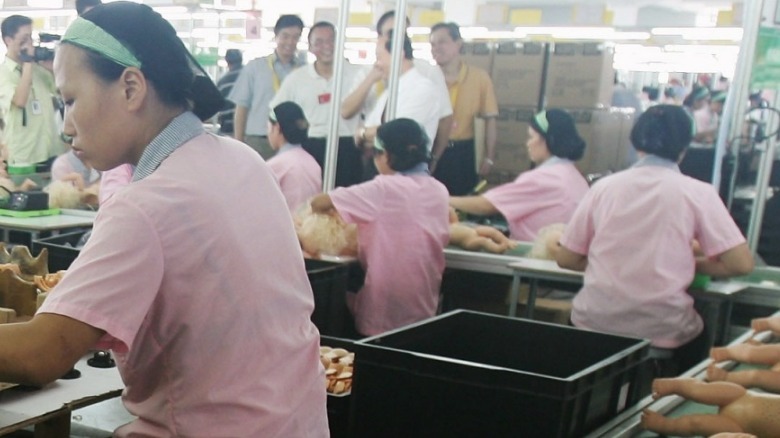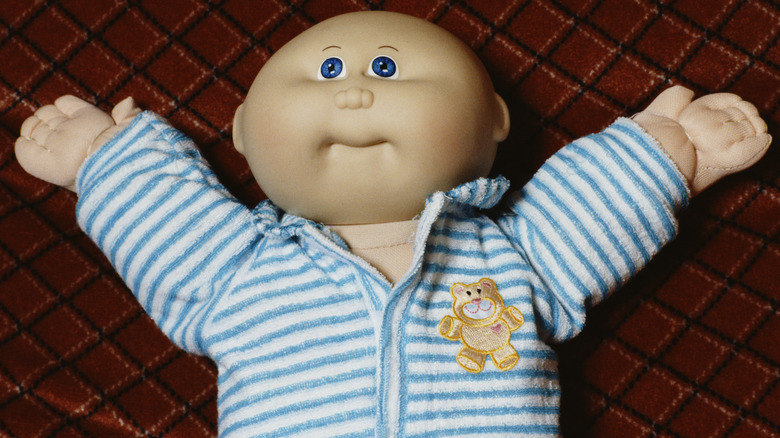The Strange Truth About The Cabbage Patch Kids Craze
"Running only to escape the rushing tidal wave behind me, caring not for the dolls but my safety, I was suddenly pushed to the floor with my shoes flying in different directions," one woman said of her experience shopping for Cabbage Patch dolls at Penn-Call Mall in an article published by Syracuse.
Miles away in Wilkes-Barre, Pennsylvania, The New York Times reported that four shoppers had been injured — and one broke her leg — as a mob of over 1,000 customers swarmed Zade's department store to snatch up a Cabbage Patch Kid doll (or three) for their child. The store only had 150 dolls in stock. The Times reported that store manager William Shigo had barricaded himself from the mob behind a protective counter. "That's my life that's in danger!" he yelled, brandishing a baseball bat for protection.
"...[These parents] are behaving in a way that is generally reserved for times of national crisis," Peter David wrote in an opinion piece for The New York Times on December 10, 1983, describing what would come to be known as the "Cabbage Patch Craze," the "Cabbage Patch Panic," or the "Cabbage Patch Kid Riots" of 1983.
The Cabbage Patch Kid Riots of 1983
Similar scenes unfolded across the United States. In Charleston, South Carolina (again, according to The Times), a crowd of about 5,000 people started a "near-riot" at Hills Department Store in hopes of securing one of only 120 dolls the store had in stock. ”They knocked over tables, fighting with each other," store manager Scott Belcher told the Times. "There were people in midair ... It got ugly.”
In Maryland, one store hired six police officers in anticipation of the pandemonium, according to The Gazette. Police were again called in Miami when frenzied shoppers knocked a store shelf onto an elderly woman. The Gazette reported there was even talk of bribes. WABC-TV reported the $21 Cabbage Patch dolls getting resold for up to $50 on the unofficial market.
When all 2 million Cabbage Patch dolls produced were sold out by October 7, 1983, per Timeline (and well before the holiday season), a 44-year-old postman from Kansas flew all the way to London to find one for his 5-year-old daughter. (According to The Times, he couldn't even find one in London — the man had to strike a deal with reporters from The Daily Mail who got dolls sent over from Bristol.)
Dubbed the "Cabbage Patch Panic" by Newsweek (per Timeline) and the "Cabbage Patch Kid hysteria of the '80s" by The New York Times, the unveiling of the Cabbage Patch doll in 1983, created by Xavier Roberts (above), sparked dozens of riots across the United States.
'Horror scenes and mobs'
With factory workers in Asia toiling around the clock to manufacture 200,000 dolls per week to keep up with Americans' demand, Richard Schwarzchild told the Advertising section of The New York Times that he believed his client, Coleco, would sell nearly 3 million Cabbage Patch dolls by the end of 1983.
Dr. Lee Salk of Cornell University said Cabbage Patch Kid dolls' debut was ushered in with "an extraordinary amount of media hype ... that underscored the crowd effect" (via The Times). That effect was even further underscored, and presumably exaggerated, by a multi-modal advertising campaign involving everything from child psychologists, "adoption papers," morning show TV spots, press conferences, TV commercials, and a supply-withholding strategy, as Stephanie Buck noted in Timeline.
Coleco's Cabbage Patch dolls netted nearly $2 million in 1983. Its Cabbage Patch-related sales would total $20 million the next year, according to "Cabbage Patch Kids: Born for Adoption at A Price," in the January 16, 1984 New York Times.
'Babyland'
According to The Gazette, Cabbage Patch Kids were inspired by Xavier Roberts' "Little People" — soft dolls with signature lopsided faces and chunky, plush limbs, apparently inspired by Appalachian folk art, Roberts said.
In the early 1980s, Xavier displayed his dolls at "Babyland General Hospital" in Cleveland, Georgia, a real-life imitation nursery. He instructed store employees to wear nurse uniforms and periodically tend to the "babies," nestled in cribs and incubators, as if they were really alive. Each doll came with a birth certificate, adoption papers, and its own name. In 1982, Coleco, a toymaker who produced electronic game consoles, plastic tricycles, and other household toys (per The Times), licensed the rights to the toy concept from Roberts, according to Timeline. Coleco renamed the dolls "Cabbage Patch Kids," but they kept the idea of adoption papers and a unique name for each doll.
Although the dolls could not be custom-sewn en masse, according to Timeline, Coleco found another way to keep each doll unique: Newly-adopted assembly technology allowed dolls to be put together according to computer-randomized specifications, producing a nearly endless number of "custom" dolls, each one with slight variations. The names were also assigned by the computer, but no two "adopted" dolls, Coleco claimed, were exactly alike.
After a months-long advertising campaign, Cabbage Patch dolls debuted in 1983 — although, it would turn out, there were not quite enough of them, according to The Times (and every other contemporaneous news source that watched the hysteria unfold). The riots began.



